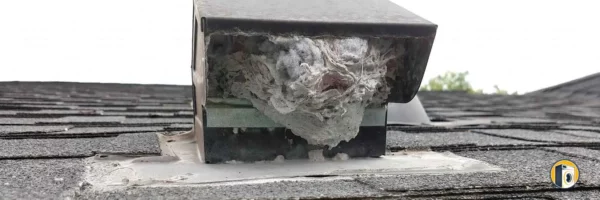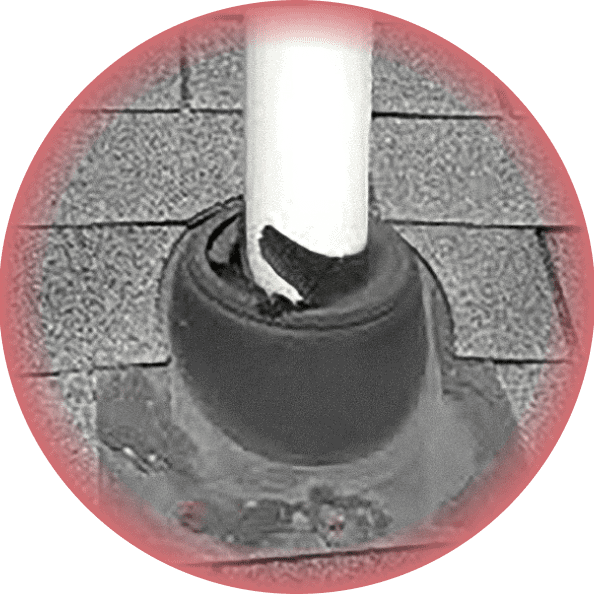
09 February 2023
Why Is A Quality Dryer / Bathroom Roof Vent An Absolute Necessity?
Understand the importance of bathroom roof vent. The use of a roof mounted bath/dryer vent may make a lot of sense for two reasons. For one, they often allow for the most direct straight up the wall and out route for an external exhaust vent. Secondly, they can be less unsightly when hidden and not smelly like wall mounted units, particularly if they’re close to a window or a door. An unrealistic third option is venting out the soffit (particularly for bathroom vents) which is seen frequently. However, this is never ever a good idea as it can lead to unnecessary moisture being drawn into the attic space and it is certainly hard on your wood framing, not to mention it’s against most building codes.
Bathroom / Dryer Roof Vent Requirements
To begin, a roof mounted bath/dryer vent has some basic requirements that need to be addressed. It must function properly both operationally and its lifespan should be equal to or greater than that of the roofing material used. Replacing any failed roof flashing can be a significant cost and on top of that, there is often hidden damage that may necessitate expensive repairs caused by its failure. This vent or any flashing should not need replacement for the life of the roof. In many cases a bath/dryer vent is the same unit, the only difference may be an insect/rodent screen or grill. The ability to exhaust gases unrestricted is paramount. The screen (if there is one) should always be removed so that the unit collects as little lint (debris) as possible. Also, this screen/barrier significantly reduces the NFA (net free area). There also may be some vents being used for dryer exhaust that have non-removable grills or insect/rodent barriers, bad idea, if this feature is incorporated into their molding and cannot be removed, you should probably look for another unit.
Cleaning and Inspecting Roof Mounted Bath / Dryer Vents
Regular cleaning and inspection will help prevent any sort of blockage or restriction that could cause the dryer itself to overheat, perhaps even resulting in a fire. To accomplish inspection and cleaning, accessibility is very important when using a roof mounted dryer vent. In the case of roof mounted vents this process often can be performed from inside the attic space, (the vent and pipe must be accessible) disconnecting the pipe or hose from the tail pipe of the unit. If attic access is not practical or possible, you must be able to get up onto the roof for service. This is best performed by a roofing professional or someone that has experience in setting up and getting around on a roof. Sometimes this may be done by contractors that specialize in cleaning dryer vents and/or ducts. Unfortunately, many existing dryer vents may not be serviceable from the roof because either the cap is inseparable, or the internal structure may have limited access. It may also be inaccessible from the attic, in which case you would need to address this issue, again, the cleaning of any dryer vent is imperative.
Weathertight Roof Mounted Bath / Dryer Vent
Equally important is a bath/dryer vent needs to be weathertight, something that just about all the various manufacturers completely fail to achieve. This means weathertight in all conditions such as wind driven rain, snow and particularly ice damming (ponding). Of the many design challenges, one of the most complex is connecting the vent structure itself to the plate. Most manufacturers fail to accomplish this with the bulk trying to employ a series of bends, folds, and cuts in the sheet metal itself. They then join the plate and vent body together possibly by using fasteners, rivets, or even spot welding in combination with sealants and caulk.
Bathroom Roof Vent Challenges
All these methods, along with poor design, generally fail in very little time, usually causing a roof leak. Even with additional precautions such as the installation of an ice and water shield barrier (necessitated because of their minimal plate perimeter) does not overcome the poor design nor the inadequate components. This is a problem that just about all commercially available roof flashings share in general. It is not okay to allow moisture into your attic space ever, and a vent or flashing that’s letting snow, ponding water, or wind driven rain to penetrate, is not acceptable. Sadly, most of these leaks can be attributed to a lack of an adequate flashing plate, poor quality components and bad design.
Best Dryer / Bathroom Roof Vent Product
However, there is a small company that for many years has manufactured premium patented roof system components, that company is Lifetime Tool® & Building Products LLC. Among many other proprietary roofing accessories, they’ve developed the Ultimate Bath/Dryer Vent. Its principal designer has over twenty plus years in technical roofing sheet metal design and installation and thirty years in successfully designing and manufacturing premium roofing products. Lifetime Tool® starts with the unit’s base plate where each side is 4 inches in width and has 6 inches on its upper side. All but the water channel around the embodiment (see website for details) resides under the shingle, slate, or tile. The plate standards are basic and proven roofing practices, something most manufacturers make little effort to understand or address.
Premium Roofing Products by Lifetime Tool®
Lifetime Tool®s ability to design and manufacture a premium product is aided by many years of experience in “deep draw stamping” (or the forming of) DDQ (deep draw quality) Kynar® coated galvanized steel. This allows for the seamless attachment of the vent body to the flashing plate while keeping it inches off the plate, that’s a good thing! This is simply the most weathertight configuration possible for all weather extremes. The Ultimate Bath/Dryer Vent has been wind driven rain tested to 110 mph alongside of four other B/D Vents. How did they do? Not even close! Testing by Farabaugh Engineering, Monroeville Pa.
The Ultimate Bath/Dryer Vent
The Ultimate Bath/Dryer Vent also has a removable cap for cleaning, this feature very important. Along with its marine grade fastener connection system that ensures its easy removal even decades after installation. The metal clip that receives the caps fasteners is also custom made for Lifetime Tool® from marine grade stainless steel, again the cap will be easily removable for the life of the roof. The Ultimate Bath/Dryer Vent is engineered inside and out for performance. Its 24-gauge galvanized Kynar®coated steel cap is clad to a sub-structure of high temperature ASA polymer. This Polymer easily handles temperatures above 212 degrees for indefinite periods of time. This proprietary polymer was chosen after months of research and testing. It is structurally superior and allows the Ultimate Bath/Dryer Vent to withstand even most (if not all) hailstorms. A few more details, the inner surface where the damper resides has sloped walls that allow for condensation to drain and incorporates built in wind walls. This feature along with rubber damper cushions help prevent damper clatter. The Kynar coated aluminum damper is permanently attached to a passivated stainless-steel axle and a removable stainless-steel snap-in screen is included. The drop pipe with its patented connection along with a 3-4-inch pipe adapter are included. The Ultimate BDV comes with a stainless-steel bug screen heat welded into a snap-in frame, but should only be used for bathroom ventilation, not dryers! This screen is also easily removed for service. All Lifetime Tool products are warranted watertight for the life of the roof.
Roger M. Cline
CEO
Lifetime Tool & Building Products LLC



